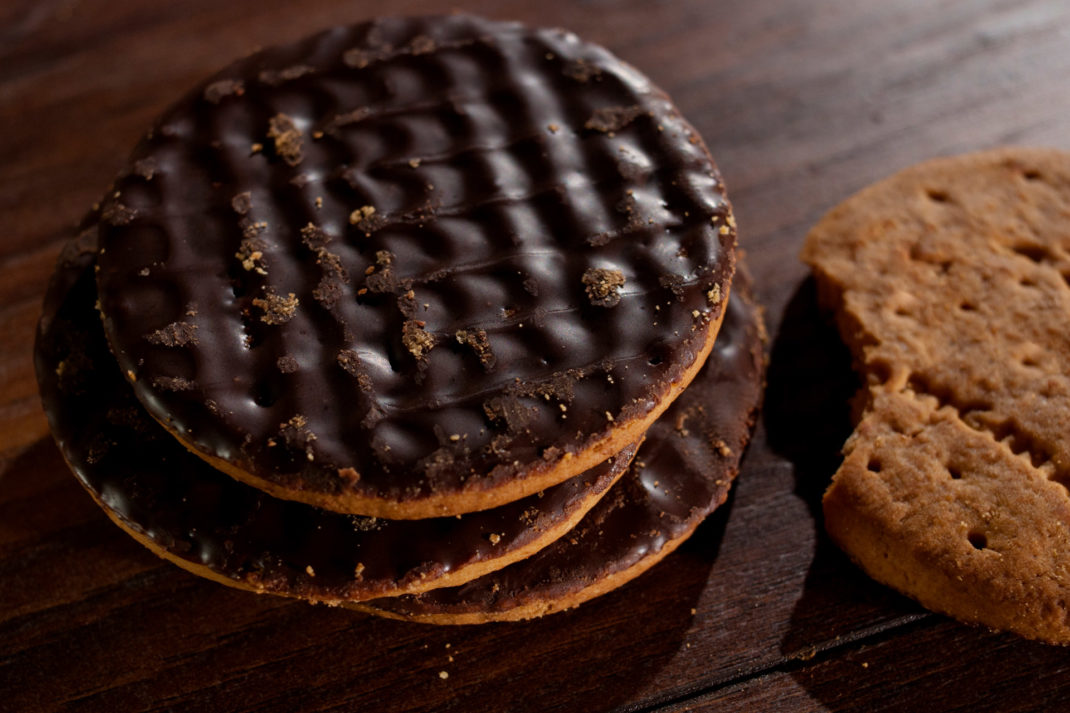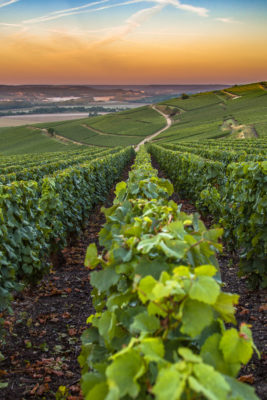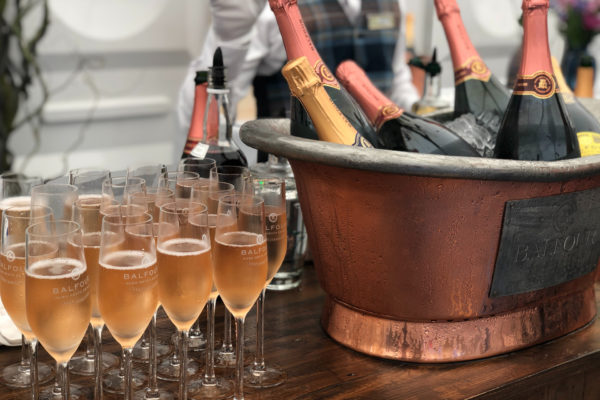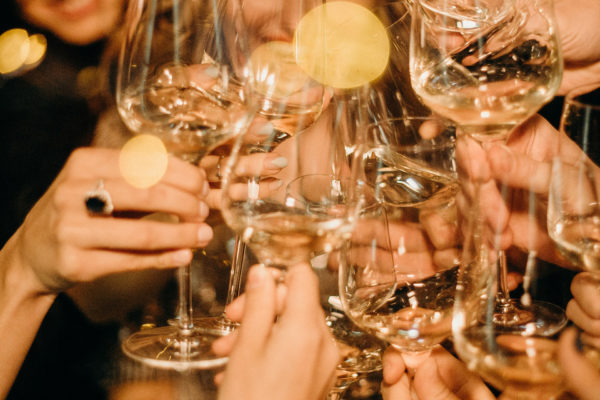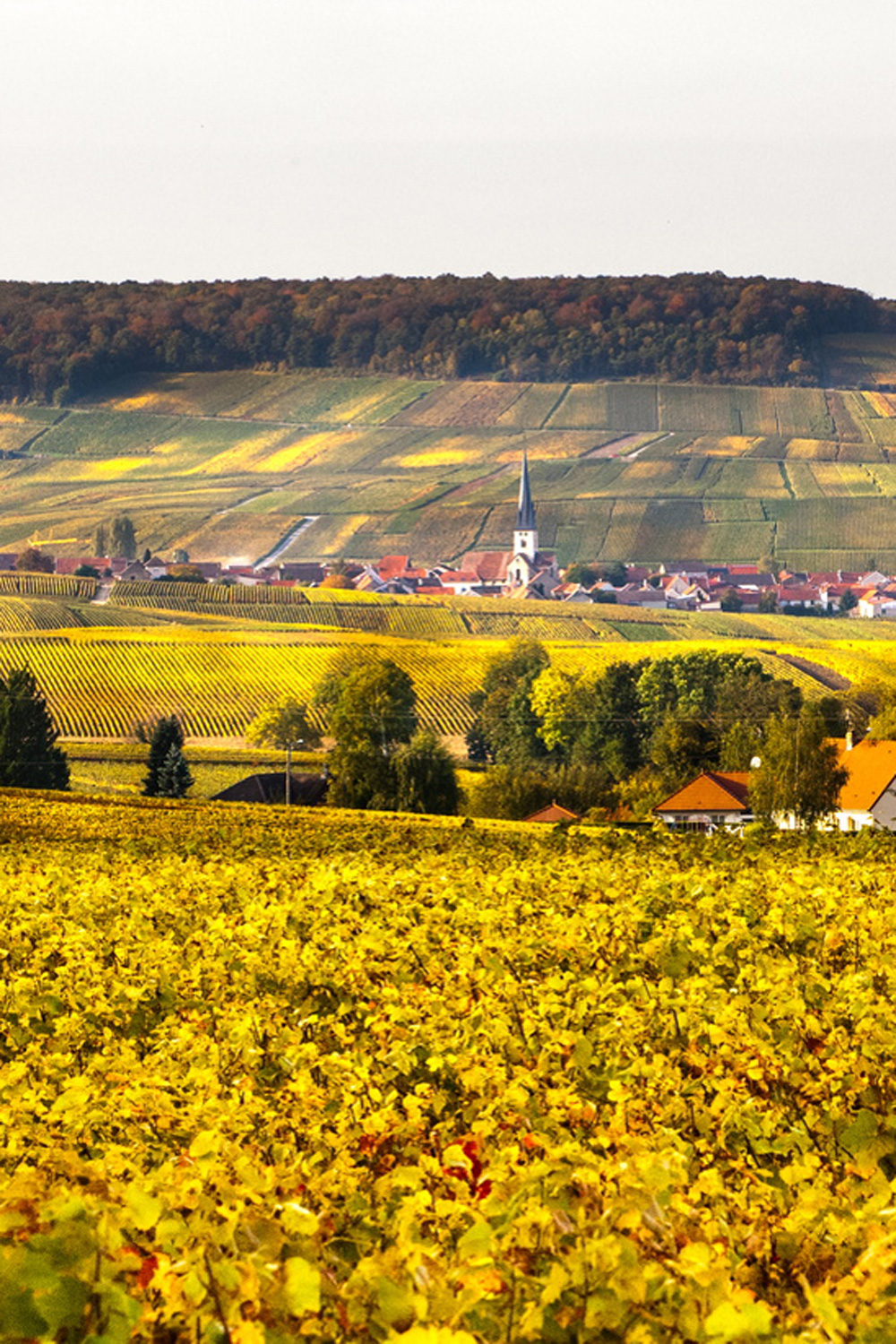
The Ultimate Guide To France’s Champagne Region
By
3 months ago
Siobhan Grogan heads to the birthplace of the famous French fizz
Less than an hour’s train ride east of Paris, the French region of Champagne is a must visit for anyone who loves a glass of bubbles. Plus, its rolling vineyards, historic buildings and excellent restaurants make it the ideal spot for an easy weekend away, especially as the area celebrates ten years on the UNESCO World Heritage list in 2025.
Champagne, France: Where To Stay & What To Do
Getting There
Jump on the Eurostar to Paris or Lille, a journey that uses 90 percent fewer carbon emissions than the equivalent flight. If it’s a special occasion, you can even splurge on a ticket in the new Premier class to start supping champagne early while dining on food by two Michelin-starred chef Jeremy Chan. I changed at Lille onto a direct TGV train to Champagne-Ardenne. The best bit? There are no liquid restrictions when travelling by train if you want to bring home a few bottles of souvenir fizz.
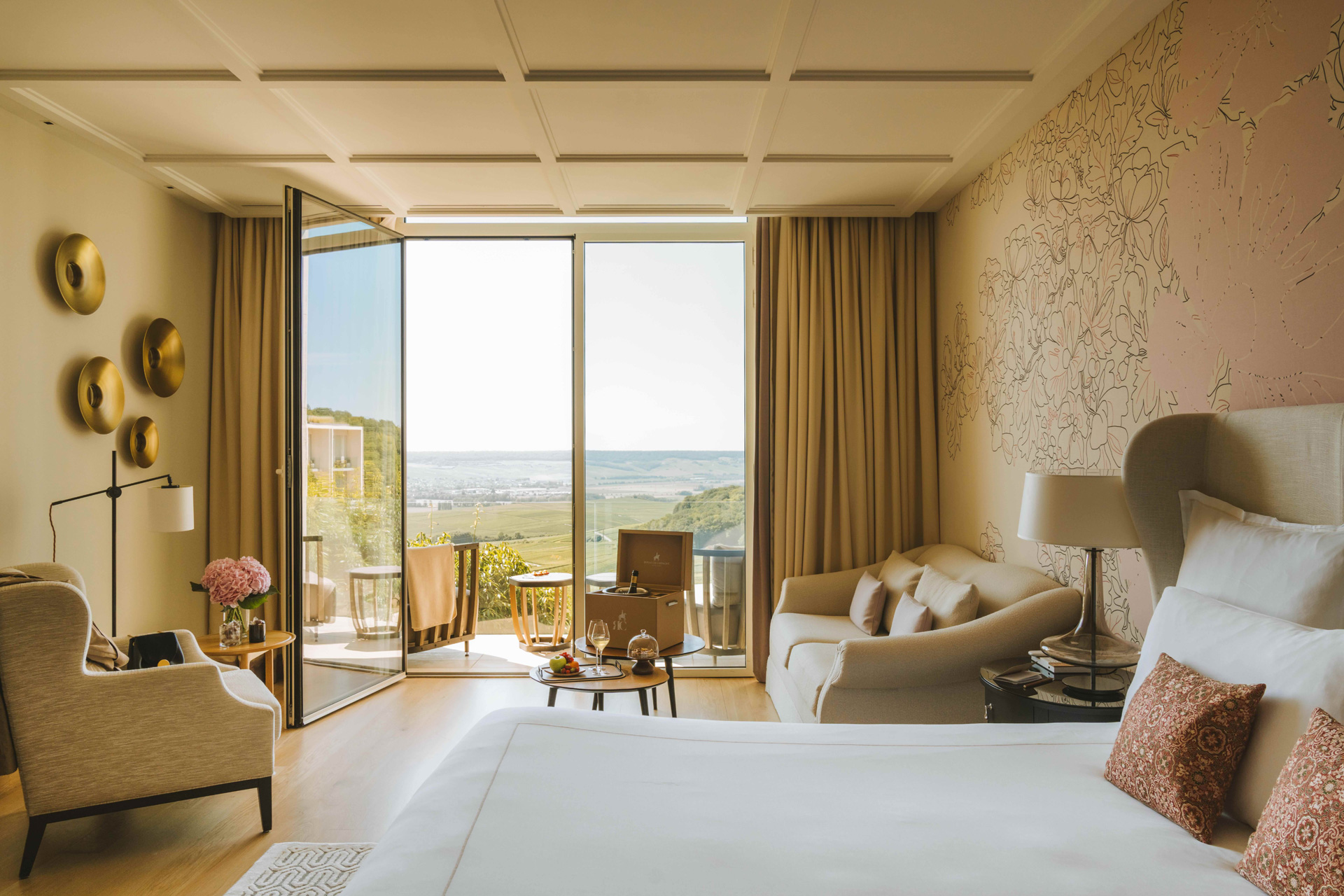
Where To Stay
On the site of a historic coaching inn where the kings of France stopped enroute to their coronation in Reims, Royal Champagne Hotel & Spa is a beauty. It’s now a contemporary building built on a hillside overlooking the vines of the Marne Valley below. It’s modern but surprisingly cosy, with a crackling lobby fire by a ready-to-play chessboard, double height ceilings and a statement crystal flower chandelier. White would be jarring: instead, the whole look is softened with the colours of the region’s famous fizz, with walls, furniture and limestone floors in soft golds and creamy beige.
There are just 47 enormous rooms and all overlook the valley below, with glass-doored balconies, freestanding baths, Diptyque products and a jar of squidgy caramels for dipping into when you fancy. Elsewhere, there’s a spa with a yoga studio, a 25-metre indoor pool and an outdoor pool with vineyard views. Guests can play tennis, borrow e-bikes to tour the champagne houses or even ask the hotel’s champagne concierge to plan a day of tasting. He can arrange exclusive access to smaller champagne houses not usually open to the public, provide a champagne chauffeur to whisk you around in an electric car and plan a private tasting at the hotel itself, sampling some of the 900 champagnes on the menu.
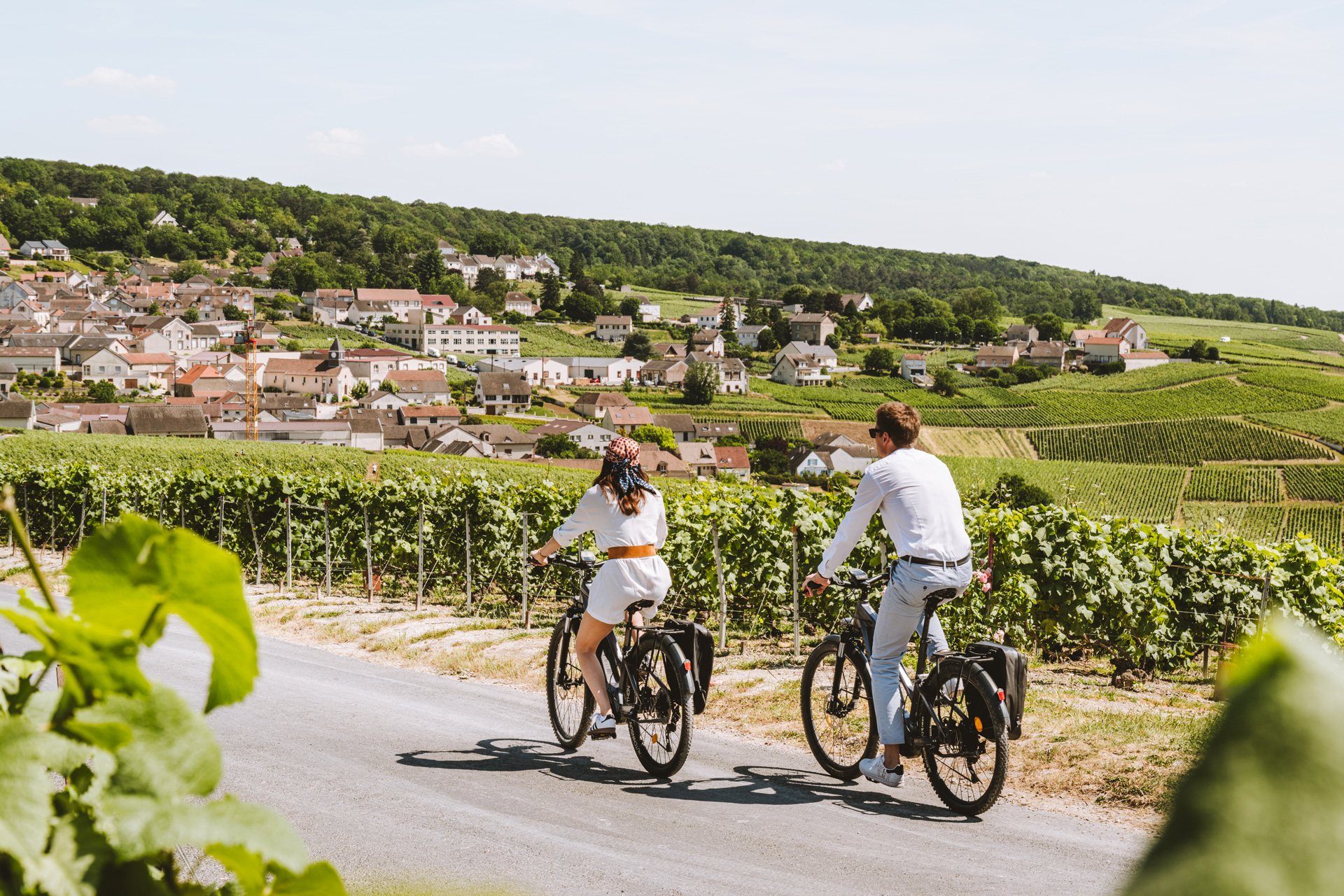
What To See & Do
This is where the magic happens. Champagne is a protected appellation (AOC), which means only bottles produced in this strict geographical region can be labelled as champagne and 300 million bottles are shipped to 190 countries around the world every year. There are countless champagne houses and snug bars offering tastings to help you find your favourite, so the sipping starts as soon as you’ve finished the flaky croissants at breakfast.
I start at Champagne Boizel, a family-run house in the centre of Epernay that has been producing champagne since 1834 – there’s even a bottle in the cellar from its very first year of operation, considered to be one of the world’s oldest existing bottles of champagne. Relaxed small-group tours happen almost every day and there’s an outdoor terrace for tasting if the sun’s out.
I also visit Baillette-Prudhomme, a one-woman operation run by the engaging Laureen Baillette, who is the fifth generation of her family to produce champagne and now makes 30,000 bottles each year in cellars underneath her home. As we taste some of her exceptional bottles in the cellar itself, she shows me photos of her young daughter hand-turning bottles, and reveals her 93-year-old grandmother pops by each day to share a glass of champagne with her. Though it’s easy to overlook smaller producers amongst all the big names, it’s a highlight of my trip, a charming reminder of the real origin of champagne in the region and the devotion that goes into creating every bottle.
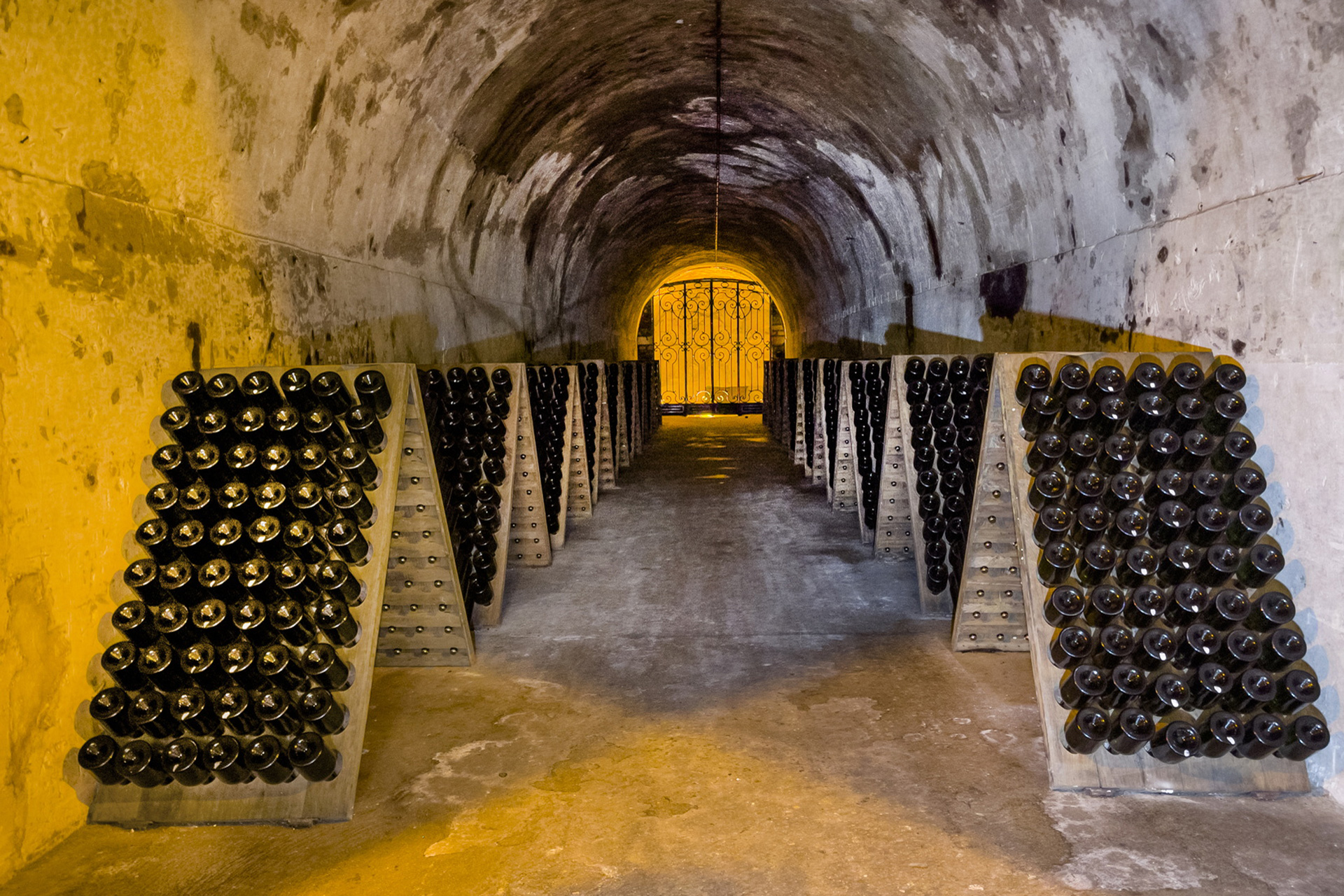
Of course, it’s essential to visit some of the region’s most famous houses too. Taittinger is the largest family-owned house and makes around six million bottles a year. It has recently refurbished its tasting rooms, while its atmospheric cellars are fascinating (if not a little eerie), first hollowed out by the Romans, then used by monks to age wine since the 12th century. Domaine Vranken-Pommery is just down the road, with its turreted main house, modern art installations and eleven miles of tunnels that weave underneath the city of Reims. Don’t miss its excellent restaurant, La Refectoire, where classic French dishes including snails, beef fillet and salmon in champagne sauce are paired with a new fizz for every course, including the surprisingly delicious Pommery Blue Sky, served over ice to accompany crème brulee.
Still unsure what to take home? Call to Club Trésors on the way to the train. This cosy wine club and shop is run by 24 independent estates and sells more than 200 champagnes, with guided tastings and a grower often on hand to answer questions. I stock up on bottles from Dumenil and Pierre Gimonnet, one of the club’s founders, but wish I could carry more.
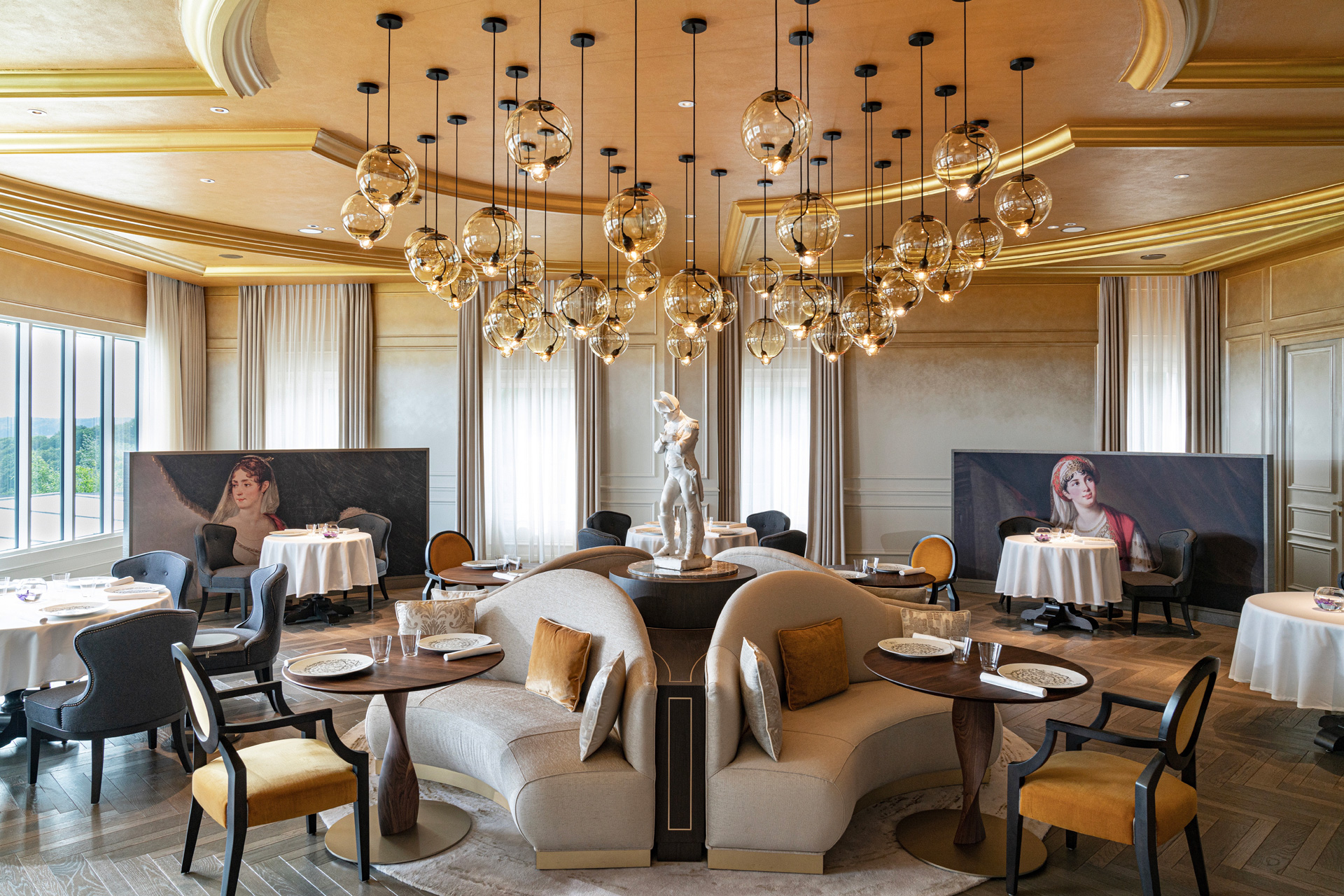
Don’t Miss
The hotel’s own restaurant, the Michelin-starred and impossibly elegant The Royal, is worth making the trip for alone. There’s a fire roaring in one corner, a gold-painted ceiling and love letters from Napoleon emblazoned on the dinner plates. Each course is exquisite and paired, of course, with a different champagne, including Brittany blue lobster ravioli served with Nicolas Maillart Grand Cru Bouzy and a sliver of nutty Ossau-Iraty cheese with champagne jelly paired with a bottle from Francoise Bedel.
The Final Word
Nothing quite beats drinking champagne in Champagne. Whether you want to learn more about what you’re sampling or just fancy a leisurely trip sipping and strolling, this is a place that truly celebrates the finer things in life. The ideal location for a weekend away, in other words.
BOOK IT
B&B doubles at Royal Champagne Hotel & Spa start from €665 (approx. £553). Book at royalchampagne.com. Eurostar fares from London to Lille or Paris start from £39 each way (£275 in Premier) when booking a return journey. The Champagne Bureau UK is the trade association of Comité Champagne in the UK, representing houses and growers in the region. Find out more at chamapgne.fr.


